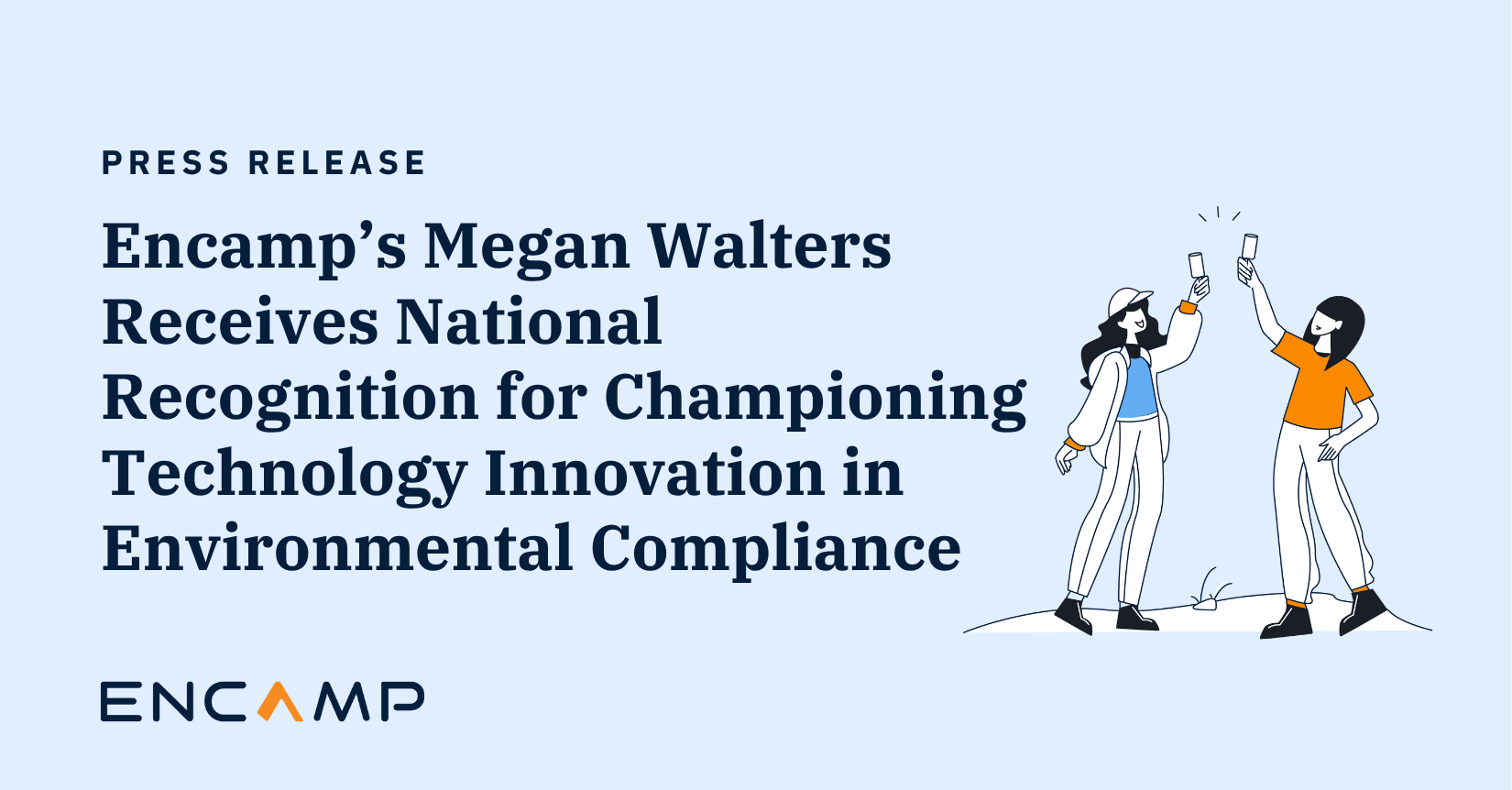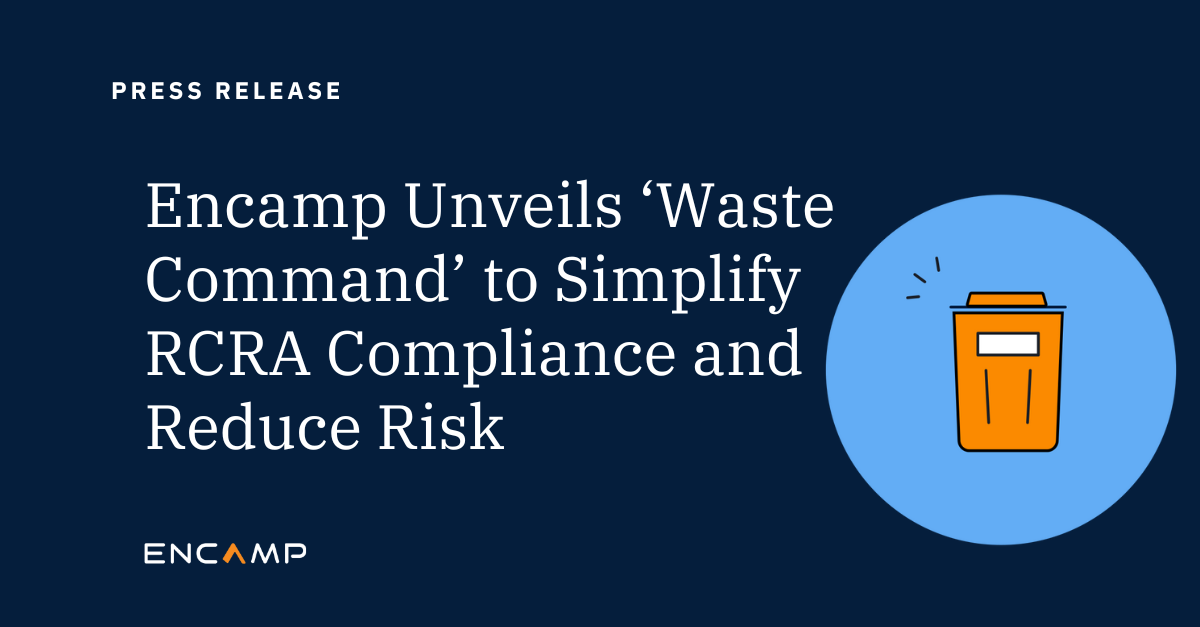The Environmental, Health, Safety, and Sustainability (EHS&S) profession has undergone a remarkable transformation over the past two decades, accelerated further by hyperglobalization and the immediate and residual effects of the pandemic. Traditionally focused solely on compliance and managing risk, EHS leaders are now increasingly pivotal in driving sustainability and corporate social responsibility initiatives. While maintaining compliance remains fundamental, EHS leaders face mounting pressure to deliver more with fewer resources and demonstrate tangible business value beyond regulatory adherence. Their profession is not just about compliance anymore; it’s about leading change, inspiring action, and making a tangible impact on our planet and society.
Two big challenges hinder EHS leaders from transforming their departments into modern, data-driven value creators.
Challenges EHS Leaders Face
Challenge #1: Outdated Processes
The current methods employed to achieve environmental compliance are inadequate to meet the demands of today’s shareholders, the public, and regulatory bodies. Despite advancements in technology, many organizations still rely on outdated, reactive approaches to achieve environmental compliance. This reliance on manual, ad hoc, and project-based initiatives often results in inefficiencies and inaccuracies in reporting. For example, outsourcing critical compliance tasks to external parties can result in a loss of control over data accuracy and a lack of alignment with the organization’s core operations. This disconnect between external teams and internal processes often leads to higher costs and compliance risks, making it increasingly difficult for EHS leaders to maintain the integrity of their environmental compliance programs.
Consider a corporation with operations spanning multiple jurisdictions. Each region may have its own set of environmental regulations and reporting requirements. Without a centralized system for managing compliance data, EHS leaders may struggle to ensure consistency and accuracy across all locations. This fragmentation not only increases the risk of non-compliance but also makes it challenging to identify trends, prioritize areas for improvement, and allocate resources effectively.
Challenge #2: Measuring and Managing Impact
EHS leaders face significant hurdles in quantifying and demonstrating the tangible impact of their initiatives. Unlike other functions within organizations, EHS teams often lack a unified view of their data, hindering their ability to assess performance comprehensively. The use of disparate systems and data sources make it challenging to consolidate information and derive actionable insights. For example, chemical inventory data, a crucial component of EPCRA reporting, may be dispersed across various sources. Some data might be held by manufacturers, some by vendors, while other parts may be managed and tracked by multiple departments within an organization. Additionally, multiple different reporting systems may hold conflicting data. This fragmented landscape not only complicates EHS leaders’ ability to gain a comprehensive understanding of their organization’s environmental footprint and compliance status but also hinders their capacity to demonstrate the business value of their environmental initiatives to key stakeholders.
88% of leaders believe they have too many disparate systems
According to the Verdantix’s 2023 Green Quadrant, which surveyed over 300 EHS leaders, 88% of respondents said they considered “consolidating various enterprise software systems” a “high priority” and another 43% ranked it as a “moderate priority”.
How can teams overcome these challenges?
To address these challenges effectively amid complex regulatory landscapes and economic constraints, innovative EHS teams are focusing on improving three critical areas:
- Ensuring continuous compliance assurance
- Driving business continuity
- Leveraging data intelligence for actionable insights
By focusing on these areas, EHS teams are not only overcoming traditional obstacles but also driving impactful and visible change within their organizations. Let’s examine each of these areas more closely.
Continuous compliance assurance
To address the challenge of navigating complex regulatory landscapes and ensuring year-round compliance, innovative EHS teams are investing in robust compliance management systems. These systems streamline workflows, monitor regulatory changes, and allocate resources efficiently, enabling proactive compliance management across multiple facilities. By leveraging technology and automation, EHS teams can confidently manage compliance complexities and mitigate risks proactively.
For example, organizations can implement compliance management platforms that centralize all relevant regulatory information and automate compliance tasks such as report submissions, fee payments, and SDS digitization. These platforms provide real-time visibility into compliance status across all facilities, enabling EHS leaders to identify potential issues before they escalate into compliance failures.
Business Continuity
Business continuity planning for EHS teams extends beyond mere emergency preparedness; it encompasses training, data management, document retention, and adopting repeatable processes. To ensure seamless operations and regulatory compliance, organizations are investing in ongoing training initiatives to empower employees with the necessary knowledge and skills for effective environmental compliance. Additionally, the standardization and centralization of data collection processes are crucial for maintaining accurate and accessible compliance data across distributed facilities. By implementing robust document retention and classification protocols, organizations can streamline access to critical documentation, ensuring regulatory adherence and mitigating compliance risks. Furthermore, data integration efforts enable organizations to consolidate disparate datasets into a centralized repository, facilitating comprehensive insights and informed decision-making. Through these concerted efforts, EHS teams can enhance business continuity, minimize regulatory challenges, and foster a culture of compliance excellence across the organization.
Data Intelligence and Actionable Insights
EHS leaders are increasingly recognizing the pivotal role of data intelligence in driving proactive approaches to environmental compliance. By harnessing advanced data aggregation tools, organizations can derive actionable insights from compliance data, empowering them to make informed decisions and enhance operational efficiency. Central to this endeavor is the ability to aggregate and analyze facility-specific compliance data, providing EHS teams with a comprehensive view of compliance statuses and regulatory requirements across distributed facilities. Through the utilization of centralized compliance solutions, organizations can streamline compliance management processes, monitor reporting progress, and ensure consistency in compliance efforts, ultimately fostering a culture of collaboration and shared responsibility for compliance excellence.
As we look to the future, we can expect to see more advancements in technology supporting EHS teams, such as AI-powered document analysis and digital document management systems, organizations can efficiently manage and maintain their document repositories while mitigating compliance risks.
Leveraging Data and Technology for Proactive EHS Strategies
EHS leaders in 2024 face significant challenges in navigating complex regulatory landscapes, demonstrating tangible business value, and ensuring environmental compliance. However, by focusing on continuous compliance assurance, business continuity, and data intelligence and actionable insights, innovative EHS teams are driving impactful change within their organizations. Through the adoption of robust compliance management systems, investment in ongoing training initiatives, and leveraging advanced data management and analytics tools, EHS leaders can proactively address compliance challenges, enhance operational efficiency, and foster a culture of compliance excellence. By embracing data and technology, EHS teams can lead the way in proactive compliance management strategies.
Luke Jacobs
Jacobs founded Encamp Inc. in 2018 with his two co-founders, his brother Sam Jacobs and friend Dan Smedema from what started as an idea during a camping trip in June 2017. Encamp focuses on software to serve the EHS industry by streamlining environmental compliance reporting.



